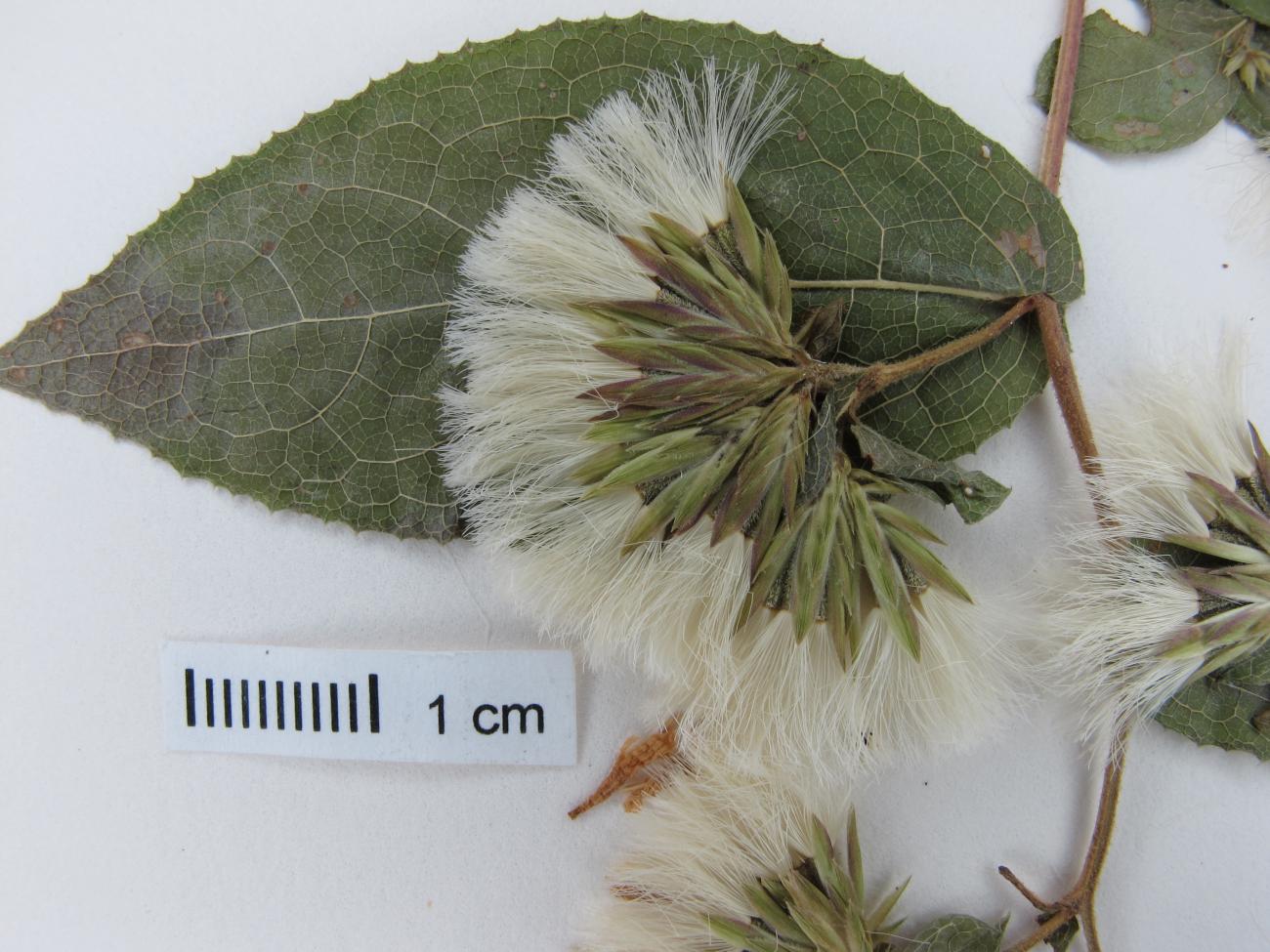
|
Family: Asteraceae |
Perennials, (2.5-)5-50(-150+) cm (caudices brown-woolly, aerial stems glabrate or resinous-punctate). Leaves basal, cauline, or both; shortly petiolate or sessile; blades elliptic-oblong, lanceolate, oblong, oblong-lanceolate, oblong-oblanceolate, orbiculate, ovate, ovate-elliptic, or rhombic-orbiculate (thin and chartaceous to thick and coriaceous), bases cuneate to cordate or clasping, margins entire or lobed or pinnately parted, dentate, or serrate, faces usually minutely stipitate-glandular and/or hirtellous. Heads quasi-radiate [discoid] (see florets), borne singly or in paniculiform or corymbiform arrays. Involucres turbinate or obconic to campanulate, 6-17+ mm. Phyllaries in 1-7 series, lanceolate to oblanceolate or linear, unequal (rigid, margins scarious), apices obtuse to acute, acuminate, or mucronate. Receptacles concave, flat, or convex, usually foveolate, alveolate, or reticulate, pubescent, sometimes paleate (paleae apically pubescent). Florets 3-25(-80), bisexual, fertile; corollas pink to lavender or white [yellow], zygomorphic (2-lipped; outer lip liguliform, 3-toothed, inner usually smaller, 2-lobed, lobes often curled); anther basal appendages entire, elongate, rounded, apical appendages lanceolate; style branches relatively short, apices blunt-penicillate (abaxial faces usually glabrous, i.e., without collecting hairs). Cypselae ± fusiform or terete to cylindric, 4-10 mm, not beaked, usually ± ribbed, faces glabrous or stipitate-glandular; pappi of 40-60(-80+) tan or white, ± barbellate to nearly smooth bristles in 1-3(-9) series. x = 27. Acourtia consists of two clades, one with species that have scapiform stems and the other with species that have leafy flowering stems. From about 1873 to 1973, Acourtia species were treated as members of Perezia, usually as Perezia sect. Acourtia (D. Don) A. Gray. J. L. Reveal and R. M. King (1973) reestablished Acourtia for the leafy-stemmed North American species, and B. L. Turner (1978) added the scapiform species. Molecular evidence (H. G. Kim et al. 2002) indicated Acourtia is most closely related to Proustia and Trixis and not to Perezia.
|
This project was made possible in part by the Institute of Museum and Library Services [MG-70-19-0057-19].
Powered by Symbiota



